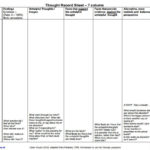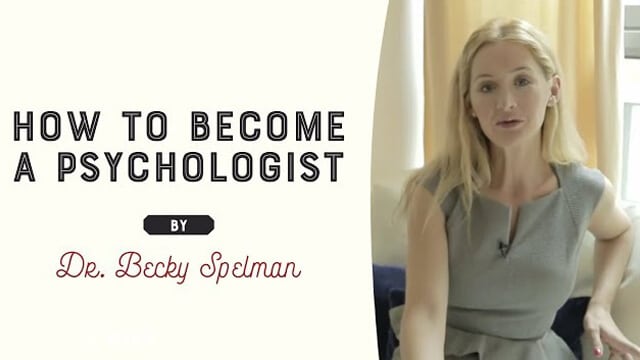 Often, our own thought processes hold us back from achieving all that we can.
Often, our own thought processes hold us back from achieving all that we can.
In order to make sure that our own negative thought patterns are not holding us back, we need to understand our own minds better, and figure out when and how negative thoughts arise.
Cognitive Behavioural Therapists often ask their clients to use a thought record, which is a simple tool that helps them to understand themselves better. Essentially, it is a piece of paper with seven columns that can be used:
- to identify negative thoughts that occur automatically in response to certain stimuli in the environment (like facing a new challenge, or a social situation, etc.)
- to better understand how thoughts and emotions are interlinked
- to logically explore the evidence at hand (in other words, to figure out whether or not negative automatic thoughts are rational)
- to challenge negative (and unhelpful positive) thoughts
- to create rational alternatives
For example, consider someone who is terribly shy and has a fear of social environments. Their negative automatic thought might be something like, “Nobody ever likes me anyway so there is no point trying.” Once they have identified this thought, they can try to figure out when it occurs. Is it just when they know that they are going to meet new people, or does it also occur in other circumstances? Does the thought emerge from difficult emotions such as panic or fear, or do the difficult emotions follow the thought? Can they step aside from the thought to logically explore the underlying assumption that nobody is going to like them, and how can they start reacting consistently in a different, more positive way?
If you struggle with unhelpful thoughts, using a thought record may help you to overcome them. At first, the therapist can help you to engage with your thought record. Gradually, you will become more adept at identifying your own negative thoughts and associating them with certain specific circumstances. You will become more articulate on the subject of your own emotions and thoughts and the links between them and you will learn techniques that will help you to think differently, with positive repercussions for your emotional landscape, your behaviour, and the ways in which you interact with and react to the other people in your life.
Using a Thought Record can be quite a lot of hard work, so it calls for commitment and determination, and for accepting that just because you have a thought does not mean that you have to believe it. The end result of a Thought Record is often that we have challenged our thoughts and beliefs and have realised that many of them have no basis in fact, making it easier to replace them with new thoughts and beliefs that are more useful to us. However, the process of arriving at this result is, in and of itself, therapeutic and useful. When we engage in a process of self-exploration, we open ourselves up to seeing the world, and our place in it, in new and revelatory ways.
The following are the steps you have to take.
- Identify the situation that triggered a negative emotion. Where were you? At work? At home? With colleagues/friends/family members? What was going on in your life when you started to experience a negative emotion? Try to pinpoint the precise details of what was happening at that moment.
- Identify what you were feeling at the time, rate the intensity of these emotions, and identify the one that you feel most strongly. Identify the emotions that you had at the time using one-word phrases such as “angry,” “ashamed,” “bitter,” “tearful,” “embarrassed,” or whatever the case may be. You may experience more than one emotion at the same time. In this case, you can designate a percentage to the emotions so as to better understand what is going on and to figure out the dominant emotion. For example, in response to a particular situation you might feel 80% angry and 20% sad. In this case, anger is the dominant emotion.
- Identify the unhelpful thoughts or beliefs that triggered the negative emotion. You could do this by asking yourself what you were thinking or what disturbed you when you became aware of the negative emotion. What did the thoughts and memories mean to you? Did any particular images go through your mind? What buttons were pressed that triggered the emotion? What would be the worst thing that could happen? In the process, you will identify the thoughts that are causing the problem and start to understand your cognitive process a little better.
- Investigate your unhelpful thoughts. Envision yourself as a defence lawyer so as to really understand the thought or belief. Does it reflect reality, or could there be a more useful way of thinking about things? You start by looking at facts that might support the unhelpful thought. For example, if you worry that one of your colleagues dislikes you, you need to isolate the evidence that supports that thought. Often, it is impossible to come up with very clear facts that support that thought; evidence that would be strong enough to stand up in a court of law. If you were triggered by your colleague looking away from you while you were talking, for example, is that really incontrovertible evidence that they dislike you?
- Explore the evidence against your unhelpful thought. Here you explore all the evidence that might point to a different conclusion than the one you have drawn. To continue with the earlier example, what evidence suggests that the person in question might actually like you? Maybe they looked away when you were talking because they saw something outside, or maybe they were just a bit distracted or having a bad day for reasons that have nothing to do with you.
- Create an alternative, more realistic and balanced perspective. You will probably find it useful to summarise all of the evidence here and to consider what supports your unhelpful belief and what challenges it. Be as dispassionate as possible, and thoroughly explore all the evidence on both sides of the argument. Try to consider how someone else would interpret the situation if they were to consider all the evidence from a dispassionate point of view. Ask yourself to honestly answer if you are being reasonable or if you are jumping to conclusions based on flimsy evidence. Try asking yourself the following questions: What would someone else say about this situation? What advice would I give to that person? What is the bigger picture here? Is my reaction proportional to the situation? Is the event that triggered the unhelpful thought really as important as it seemed at first? In the process of answering these questions, you will arrive at a perspective that presents a more realistic picture of what is going on.
- Reassess your feelings after having assessed the evidence at hand. If you originally felt angry, how do you feel now? It is likely that you will have fewer reasons to feel angry than you did before, now that you have taken a clear look at the evidence. Perhaps your anger has not disappeared completely, but it may have receded to a more manageable 20%, given that you don’t have solid evidence to support your initial interpretation.
With persistence, you will find that you are actually able to change the way your mind works and that your thoughts become more balanced as you learn how to become less triggered by situations that you typically find challenging. Try not to be frustrated about the fact that this takes time. These are big changes, and they will not happen overnight, but in small increments that may only become perceptible gradually. Both the process of using the thought record, and of retraining your brain, will be difficult at first, but it will get easier over time. It helps to choose a specific day and time to fill in your thought record. You should aim to do it at least two or three times a week for several months so that you can see your steady progress and the changes it makes to your life.
Eventually, you will find that you no longer need to use an actual thought record because you have been able to assimilate the skills it facilitates into your natural thinking process. While we all have negative thoughts and difficult feelings from time to time, there is no need to let them stop us from being the best version of ourselves that we can be.
The thought record is just one of the many useful tools that can be brought to bear on a presenting problem in the context of cognitive behavioural therapy. It is a tried and tested technique that is easy to understand, practical to use, and that can make a real and lasting difference to one’s quality of life.
WHO CAN I SPEAK TO FURTHER ABOUT THE ISSUES IN THIS ARTICLE?
For help with the issues discussed in this article speak to one of our therapists here at Private Therapy Clinic for a free initial chat or to make an appointment.
















